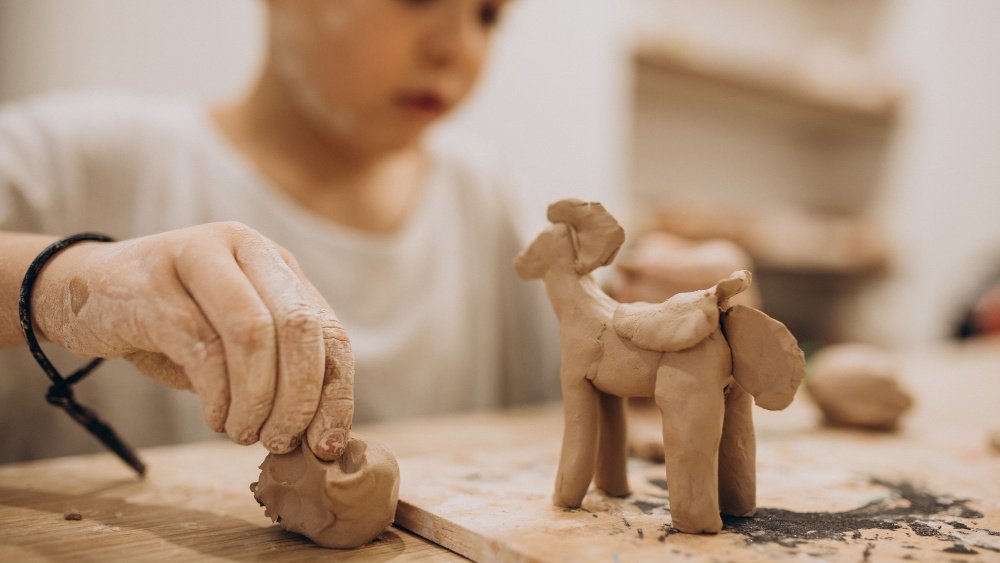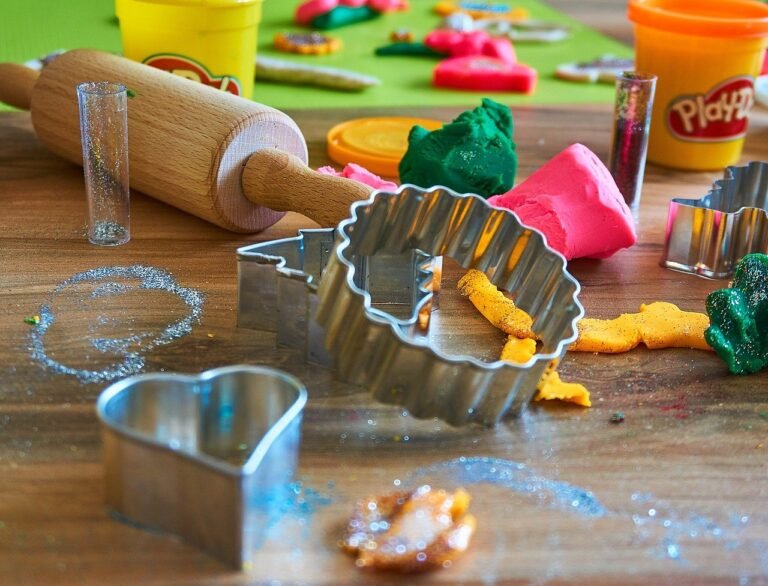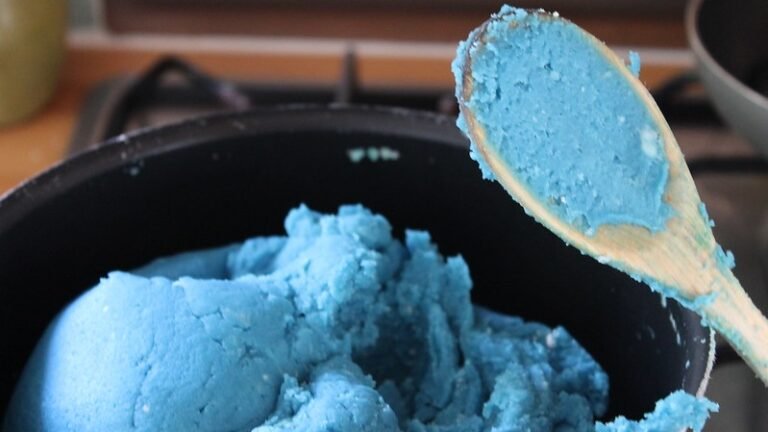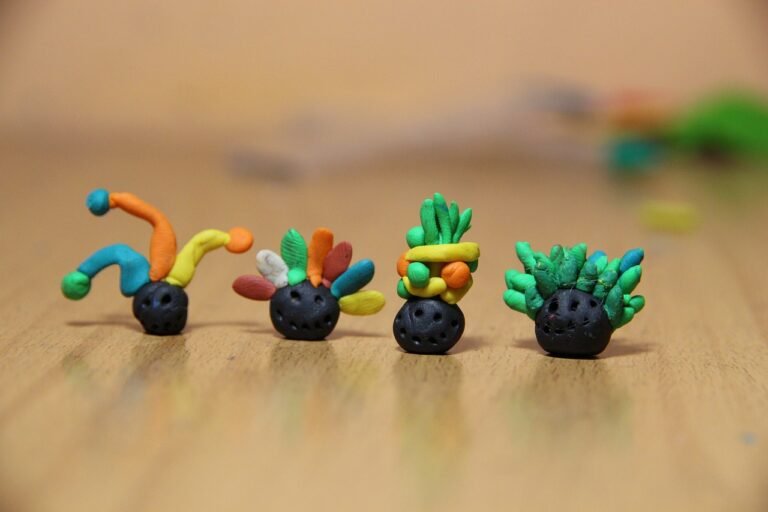What Is Playdough Made Of?
Playdough has been children’s favorite entertainment for more than 60 years. For decades, kids and their parents have turned this waxy dough into crafted creations of all forms and colors. But what is a play dough made of?
The non-toxic playdough is primarily a mixture of a specific combination of water, flour, and salt. This version of the dough does not contain any milk products, peanut, or peanut oil. Playdough does not contain latex or any other types of latex substitutes.
I will explore the characteristics of the playdough and how it can be made safely at home, using basic ingredients. All kids play with playdough growing up and you should understand its compositions and traits.
Is Playdough The Same As Clay?
Clay and playdough have many things in common, but they are not the same. While it is true that children use both of them for modeling, they are two different substances. Toys made from playdough are not just fun to play with, but they are an amazing sensory and learning experience for children.
The most important difference between playdough and clay is that the former is water-based while the latter is oil-based. In addition, they have other differentiations. Clay tends to hold its shape for longer and is more stable, while creations from play dough can be altered easily and frequently.
Both clay and playdough are used by children in art classes or at home for modeling. However, they have different ages of suitability. Playdough is best for pre-school-age children due to its unique ability to be easily altered and changed in shape.
When playdough dries, it cracks and slowly loses its shape. For this reason, it is very often used for temporary creations. However, when playdough dries out, it is extremely easy to clean it up, which is why parents adore this material.
On the other hand, clay is more stable and keeps its shape better for a longer time. Its composition makes the material firmer and more durable. Although clay tends to be solid, after a little use, it becomes softer and highly malleable.
Clay’s features make this material more suitable for older children. It is a little bit difficult to work with, but clay does not dry out or crumble. This is why clay creations are more durable.
As mentioned above, modeling clay is oil-based material and it will leave marks on the surface it touches. Those marks are especially difficult to clean up on wooden surfaces.
Both materials being discussed, I suggest introducing pre-school aged children to playdough, as it is easier to work with. Older children love clay because it is more enjoyable and holds the shape better.

How Do You Make Edible Playdough?
Young kids put almost everything in their mouths and naturally playdough is not an exception. Fortunately, it is very easy to make edible playdough. Plus, you can make it using basic ingredients and have fun.
In case you were wondering if Play-Doh is safe to eat, here is the article where you can find answers.
I can offer several recipes for edible playdough and all of them are safe (and some can be quite delicious). All you will need is flour, salt, and water. FDA recommends abiding raw flour in all recipes and playdough is no expectation. You can use Marshmallow Playdough, Vanilla Playdough, or Peanut Playdough for your playdough.
The process of making playdough starts with melting marshmallows and some coconut oil. After those ingredients are well melted add a few drops of food coloring, depending on what color you are looking for.
When your mixture gets the color you want, stir in the cornstarch and wait for the substance to cool a little bit. This will take a couple of minutes. When the dough is cool enough, start gently kneading it. If the dough feels sticky, just add a teaspoon of cornstarch and continue kneading by hand.
I will offer a second recipe, which is also easy and requires basic ingredients.
You will need:
- two cups of flour
- half cup of salt
- two packers of fruit-flavored drink-mix powder
- two cups of boiling water
- 3 tablespoons of oil (preferably vegetable oi
To start, mix together all dry ingredients. When you get a nicely blended substance, carefully add boiling water. Wait for the mixture to cool a little bit and start kneading by hand until it reached the right consistency.
You can add edible glitter, gold or silver flakes, or demerara sugar to your dough. This will give your mixture a nice touch of sparkle and a smile on your child’s face.
Why Does Playdough Smell So Good?
Everybody agrees that playdough smells delicious. Maybe, the reason behind this is that playdough is frequently associated with happy childhood memories. Maybe, the smell of playdough makes us think about carefree times and sweet moments we spend with our siblings and friends, modeling colorful objects.
This being said, I can’t just attribute the amazing smell of playdough to sweet memories of the past. Growing up, I used clay for modeling and I first tried playdough in my late twenties, when I had my own kids.
Hasbro company describes its smell as “the combination of a sweet, slightly musky, vanilla-like fragrance, with slight overtones of cherry, and the natural smell of a salted, wheat-based dough.” In 2018, Hasbro trademarked the smell of Play-Doh.
However, homemade playdough can also actually have a very pleasant aroma. The smell of playdough depends on the ingredients used. When I make playdough with my children, we often play with the scent of caramel, cinnamon, or chocolate.
Scented playdough is not hard to make. It’s just as basic as making regular edible playdough in your kitchen. The process is the same, just add a teaspoon of ground cinnamon or chocolate to your mixture for the amazing smell.







